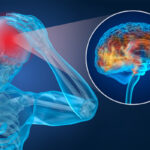Humans experience emotions related to the events in our lives.
We are influenced by everything we encounter from the weather to our sleep and hormones to the people we interact with every day. However, our brains play a critical role in how we process these events and the emotions that they trigger.
Here, we look at the parts of the brain involved in processing emotions and how that helps shape our mood and attitude.
The Limbic System
The limbic system is in the brain’s cerebrum directly underneath the temporal lobe.
It consists of several parts and fulfills many important roles including the processing and regulation of emotion. Because the limbic system is linked to the endocrine and autonomic nervous systems, it also triggers our reaction to stress and danger, known as the flight or fight response.
The parts of the limbic system include:
Hippocampus
The hippocampus has two parts located on either side of the brain’s hemisphere.
It is the hub of memory while also contributing to learning and emotions. Located above the ears, it is responsible for a process called neurogenesis, helping to generate neurons that send signals throughout our system.
Amygdala
The amygdala is located next to the hippocampus and is also involved in helping to form new memories.
It attaches emotions when we recollect something, as well as helping to control and regulate our emotional responses. It creates strong memories driven by emotions which means we tend to remember these types of events more than basic things that occur every day. However, the amygdala is most involved with our response to stressful and dangerous situations, a very important factor in survival.
The amygdala also contributes to the following:
- Aggression
- Learning based on rewards and punishment related to our behavior
- Handling and using implicit memory to do things such as skate or tie your shoes
- Finessing social communication and interpreting someone’s intentions based on the words they use or how they are acting
- Emotions related to parenting/caregiving
- Emotions connected to memories
- Behaviors we learn related to addiction
Hypothalamus
The hypothalamus is involved in homeostasis, facilitating functions such as blood pressure, temperature, and hunger/thirst. It also regulates behavior such as response to stress and sexual motivation.
It is triggered by certain stimuli that might include smells or light.
Secondary Limbic System
The secondary limbic system also has a few structures involved in emotion, including:
Cingulate Gyrus
The cingulate gyrus is responsible for emotional regulation, including fear and encountering negative situations such as pain.
Ventral Tegmental Area
The ventral tegmental area triggers positive emotions such as pleasure, and joy, stimulated by dopamine production.
Prefrontal Cortex
The prefrontal cortex is also a dopamine pathway, impacting pleasure, but also assisting in behavior such as planning.
Basal Ganglia
The basal ganglia regulate voluntary movements such as eye movements but also triggers responses to rewards that can contribute to repetitive (both good and bad) behaviors.
How Does the Limbic System Work?
The limbic system uses neurotransmitters such as serotonin and dopamine.
These chemicals act like messengers, triggering signals across your brain regions where the signals are assigned different emotions.
Emotions are used to guide your behavior in a split second based on a very quick risk versus reward assessment. For example, as mentioned, the amygdala relates to danger and tells us if we need to be wary of certain situations. The next time we encounter a similar situation, we can react appropriately to avoid danger and harm.
The hippocampus helps determine our general mood, which can cause us to want to be social in a good mood or withdraw if we are feeling down. But it goes beyond mood. The system also helps teach us certain behaviors. As a result, when all is well with our minds, we use those memories to help dictate expected behaviors, such as still going to work despite feeling happy when the sun is shining, and the beach is calling our name or avoiding the temptation to pull the covers over our heads and stay in bed when we are feeling a little gloomy. As a result, we can function to hold a job, maintain healthy relationships, and set and obtain longer-term goals.
The Limbic System and Mood Disorders
Mood disorders occur when the balance between emotion and mood triggers are disturbed.
As a result, our emotions get caught up in our own thoughts, suppressing the cognitive control network. Thinking becomes slow, we lose concentration and can also become indecisive. This is why treatment for mood disorders often focuses on stimulating the cognitive control network to help it regain its ability to strike the right balance. Restoring normal levels of neurochemicals also improves the signals needed in the limbic system.
A healthy limbic system teaches us resilience and improves our ability to react with emotional intelligence, maintaining a happier balance to deal with life events.
The Chicago Mind Solutions Difference
Chicago Mind Solutions works with individuals, offering neuropsychological testing and non-invasive treatment for many mental health conditions. For more information about our treatments and teletherapy options, please contact us at (224) 723-5050 or email info@chicagomindsolutions.com.






